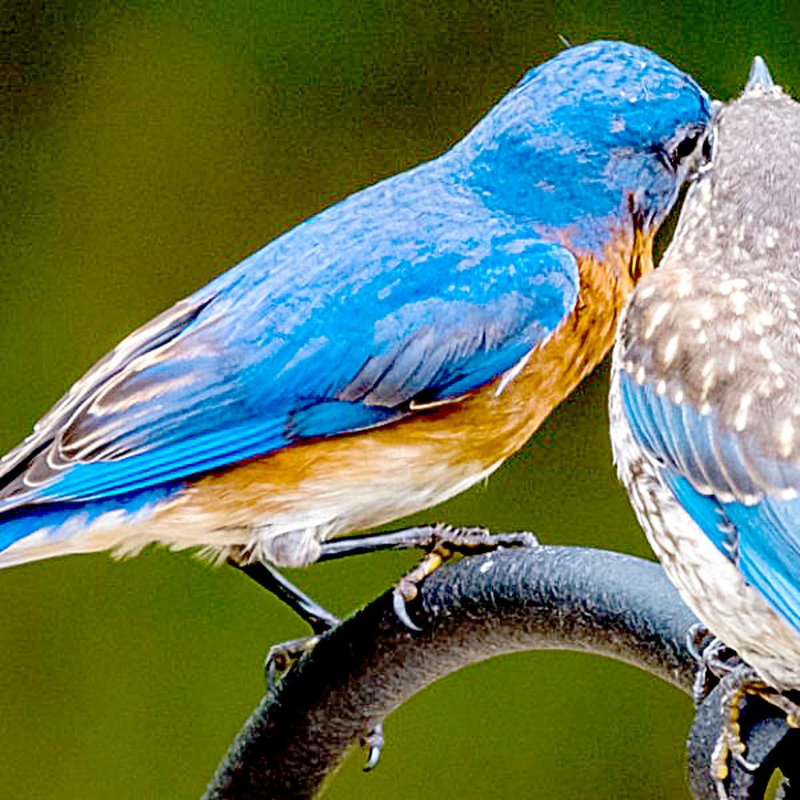The Bella Vista Garden Club had a visitor from another local group concerned with nature. Leon Wehmeyer, president of the local chapter of the North American Bluebird Society, had some good news.
Between 1940 and 1980 the population of bluebirds in the United States declined by 90 percent. Bluebirds like to nest in wooded areas that are next to open meadows. The woods give them some protection from predators, while open grassy areas give them a place to feed on small insects. As cities and towns grew, bluebirds were forced out, Wehmeyer told the group.
2016 Fledged on Bella Vista trails
Eastern Bluebirds 1601
Tree Swallows 664
Carolina Chickadees 86
House wrens 8
Tufted titmice 7
Fledged in volunteer’s boxes
Bluebirds 119
Reported in Neighborhood boxes
Bluebirds 119
It was a Bella Vistan named Charles Nelson who realized that Bella Vista with its golf courses and rolling, natural hills, was an ideal place for bluebirds, Wehmeyer wrote in a piece for the North American Bluebird Society. Nelson helped get the local chapter started in 1980.
Now the bluebird population is growing again. Nationally, the birds went from about 8 million to 19 million, but there's more that can be done.
Members of the Bella Vista Bluebird Society maintain bluebird trails on each of the six golf courses, at Loch Lomond Park, Branchwood Park, Concordia and several local churches. The trails consist of boxes set on poles about 100 yards apart, usually with a shield or a piece of PVC pipe below to discourage predators. Volunteers check their boxes about every week to 10 days.
The Bluebird Society and the POA have had a long partnership. At one time, the bluebird boxes were used as yardage markers on the courses.
Bluebirds produce two or three "broods" a summer, Weymeyer said. The female sits on up to six eggs and then the babies while the male brings food. It takes about 30 days for the baby birds to get out of the nest and then the parents stay with the babies in the woods while they learn to fend for themselves. After a week or two, the female will return to the box and start all over again.
The volunteers clean out the boxes between nests, Wehmeyer said. The birds will be fine just building a second nest on top of the first, but a good cleaning gets rid of the insects that might share the nest.
The boxes are hinged so they can be opened easily, he said, and the birds don't mind a human peeking in. Birds don't actually have a sense of smell, so the mother bird will never know if someone has touched her babies.
The Bluebird Society sells the boxes and will even install them.
Snakes, raccoons and feral cats will kill bluebirds, so will some other types of birds. Wehmeyer said sparrows and starlings can also kill bluebirds.
But some bird species are fine with other birds. The tree swallow is also endangered and can live near the bluebirds, volunteers allow them to use some of the boxes. Sometimes, a second box may be located nearby if tree swallows have taken over a bluebird box, he said.
For more information or to buy a box, visit the society's webpage, bvbluebirds.com or call Wehmeyer at 479-855-1642.
General News on 03/29/2017
